
|
Jahangir was the son of Akbar by his Rajput queen, Princess Jodhabai of Amber. Among the Mughal emperors, he was perhaps the greatest patron of the fine arts, in
which he took a great personal interest. Mughal miniature painting perhaps achieved its greatest height under his patronage. We see a similar flowering in numismatic art also, as
Jahangir introduced several portrait type coins, along with his celebrated Zodiac series.
|
 |
Jahangir |
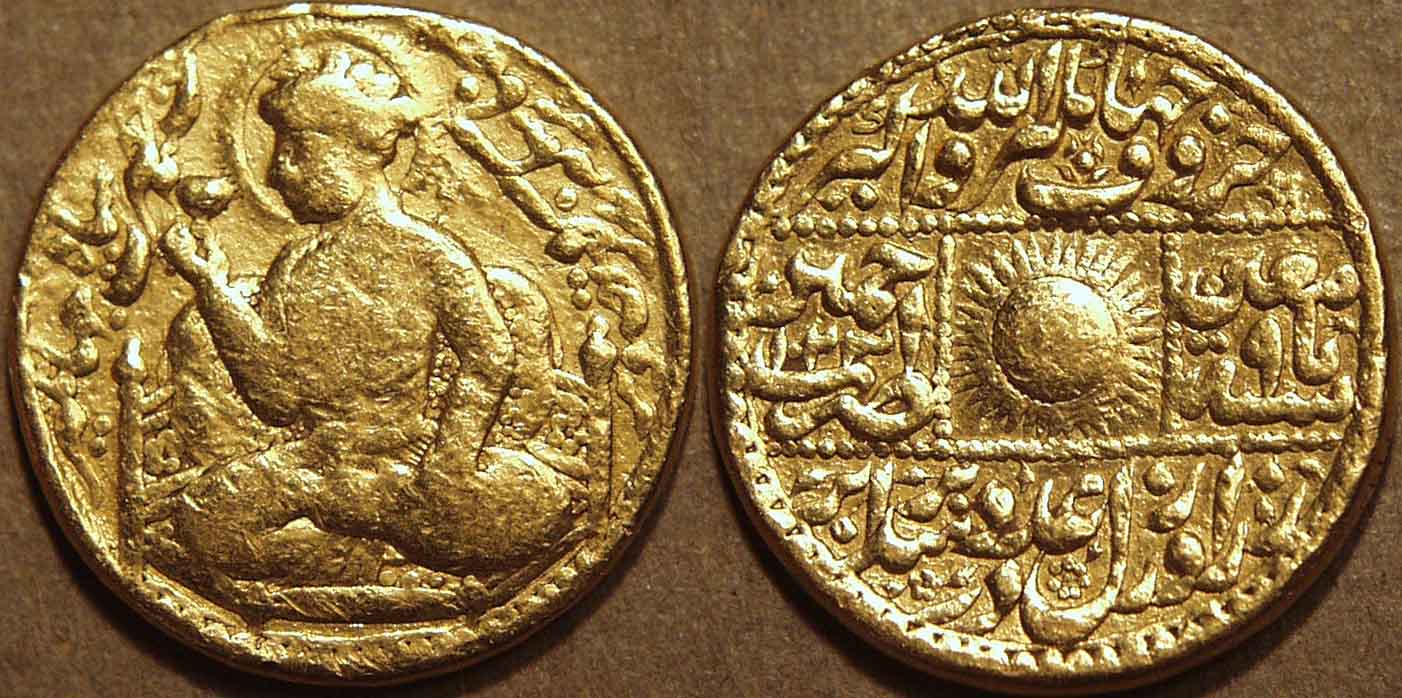
|
Jahangir (Muhammad Nur-ud-din Salim), 1605-27, Gold mohur, Ajmer
Weight: 10.83 gm. Diameter: 21 mm Die axis: 1 o'clock
Jahangir enthroned, holding wine goblet /
Radiate sun, surrounded by legends in four compartments
AH date 1023 (= 1614-15 CE), regnal year 9
|
 |
One of the few Mughal portrait coins. |
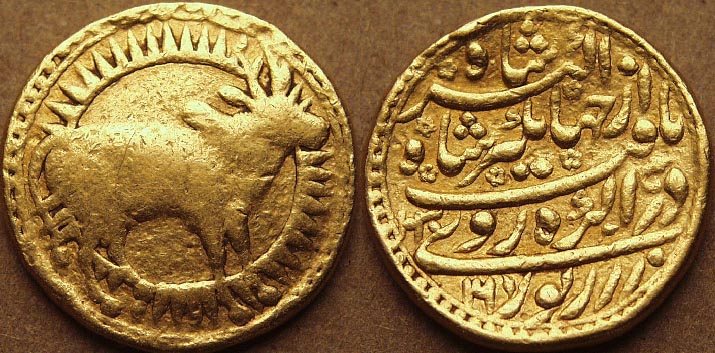
|
Jahangir (Muhammad Nur-ud-din Salim), 1605-27, Gold mohur, Agra
Weight: 10.73 gm. Diameter: 21 mm Die axis: 1 o'clock
Humped bull standing right (representing Taurus) within radiate circle /
Persian legend in four sections: zar zewar dar Agra ruye yaft az Jahangir Shah Akbar Shah
(received ornament on gold at Agra from Jahangir Shah [son of] Akbar Shah),
AH date 1030 in third section and regnal year 16 in lowest panel; all within double-ruled and dotted border
|
 |
Jahangir issued an attractive series of coins in gold and silver representing the twelve
signs of the Zodiac. His son Shah
Jahan later ordered all these coins melted, accounting for their extreme rarity now.
The origin of Jahangir's zodiac series is known from his own entry in his memoir Tuzk-e-Jahangiri. Jahangir wrote:
Previously to this, the rule of the coinage was that on the face of the metal they stamped my name, and on the reverse the name of the
place and the year of the reign. At this time it entered my mind that in place of the month they should substitute the figure of the
constellation which belonged to that month...in each month that was struck, the figure of the constellation was to be on one face, as if
the sun was emerging from it.
Thus the sign of the zodiac was substituted for the month in which the coin was minted. |
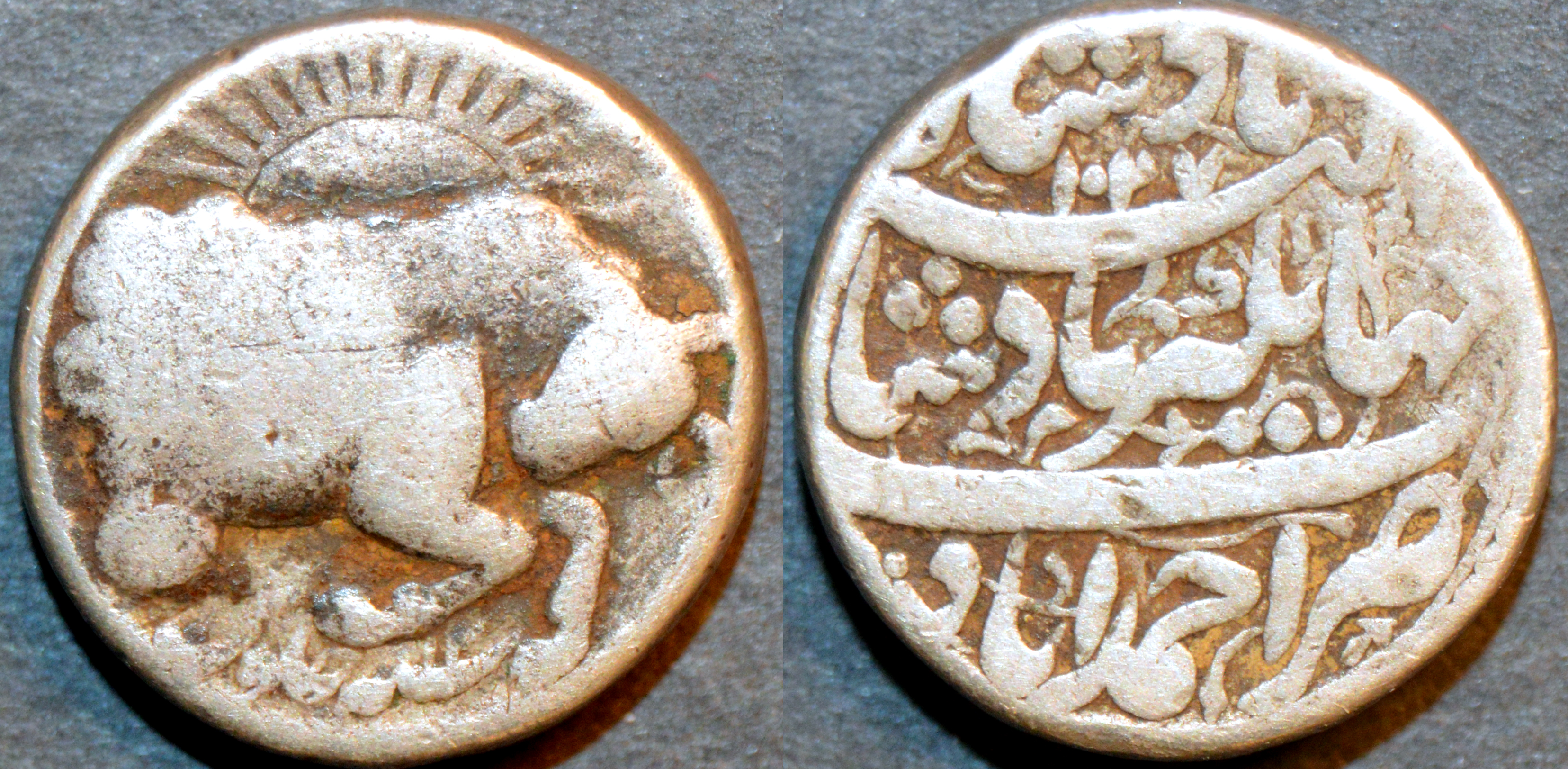
|
Jahangir, 1605-27, Silver Zodiac rupee, Taurus, Ahmedabad
Weight: 11.29 gm. Diameter: 19 mm Die axis: 9 o'clock
Forepart of bull right, representing Taurus, radiate sun behind, legend below with RY date 13 /
Legend, naming Jahangir, mint Ahmedabad and AH date 1027
|

|
Jahangir, 1605-27, Silver Zodiac rupee, Gemini, Ahmedabad
Weight: 10.99 gm. Diameter: 20 mm Die axis: 7 o'clock
Twin figures representing Gemini, radiate sun behind /
Legend, naming Jahangir, mint Ahmedabad and AH date 1027
|

|
Jahangir, 1605-27, Silver Zodiac rupee, Cancer, Ahmedabad
Weight: 10.95 gm. Diameter: 22 mm Die axis: 9 o'clock
Crab representing Cancer, radiate sun behind /
Legend, naming Jahangir, mint Ahmedabad and AH date 1027
|
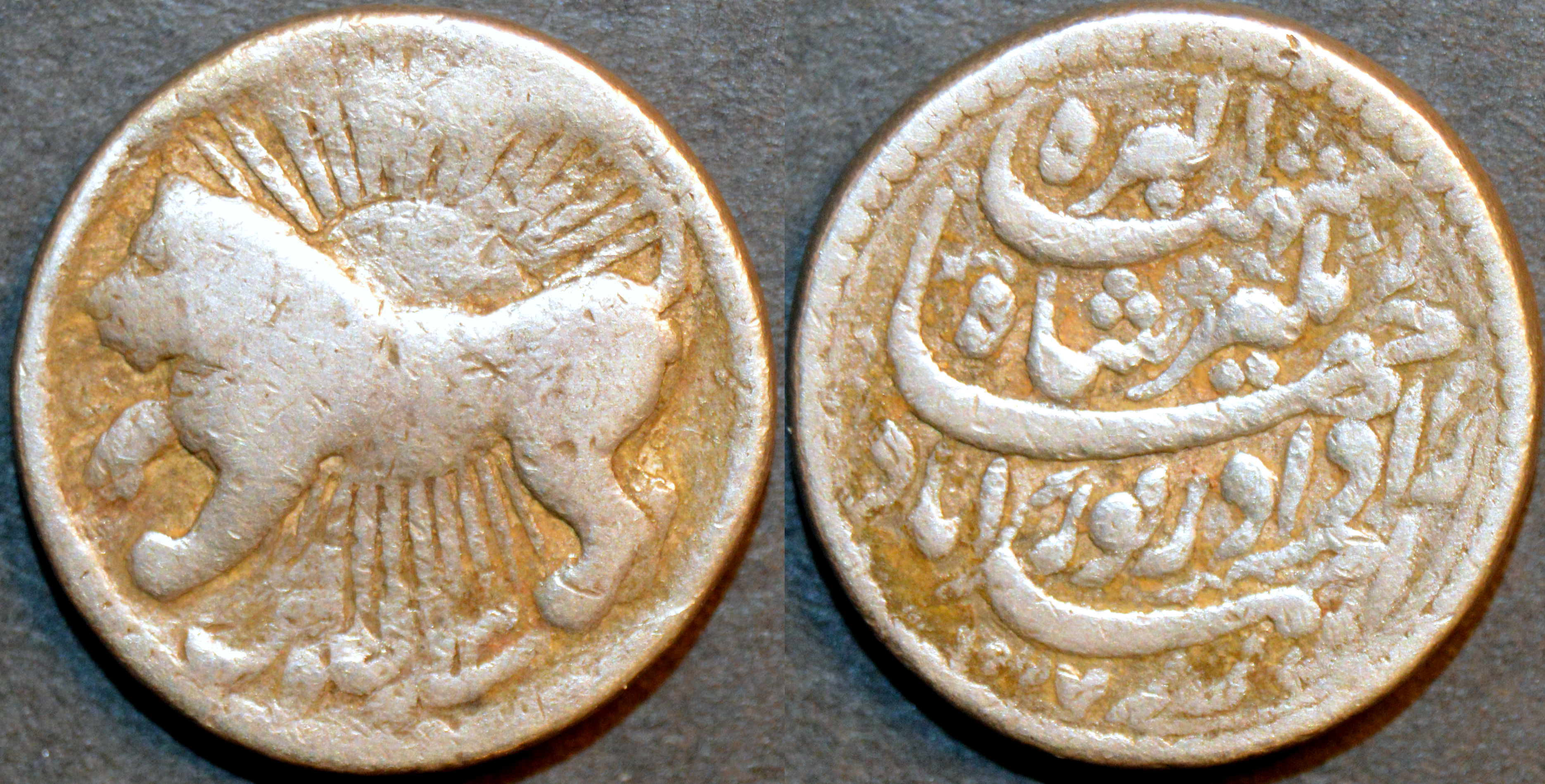
|
Jahangir, 1605-27, Silver Zodiac rupee, Leo, Ahmedabad
Weight: 11.14 gm. Diameter: 22 mm Die axis: 11 o'clock
Lion left representing Leo, radiate sun behind, legend below with RY date 13 /
Legend, naming Jahangir, mint Ahmedabad and AH date 1027
|
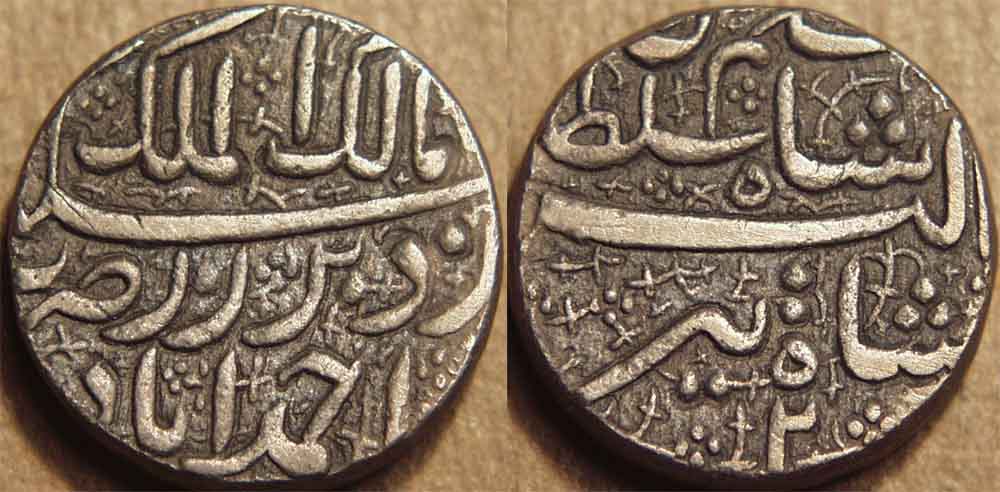
|
Jahangir (Muhammad Nur-ud-din Salim), 1605-27, Silver rupee, Ahmedabad
Weight: 11.01 gm. Diameter: 18 mm Die axis: 12 o'clock
Legend, Persian couplet /
Legend, including year 2 (of Jahangir =1606-07), month Tir
|
 |
In this very early coin of Jahangir, we already see the signs of his emerging style ... the letters are thickening and there is
a beautiful filigree "background." The coin names him by his pre-accession name of Salim. |

|
Jahangir (Muhammad Nur-ud-din Salim), 1605-27, Silver rupee
Weight: 11.37 gm. Diameter: 20-21 mm Die axis: 1 o'clock
Legend /
Legend
|
 |
A nice example of the beautiful Jahangiri style, with the words of the legends resting on a "carpet" of flowers. The coin
has no mint name and no date. |
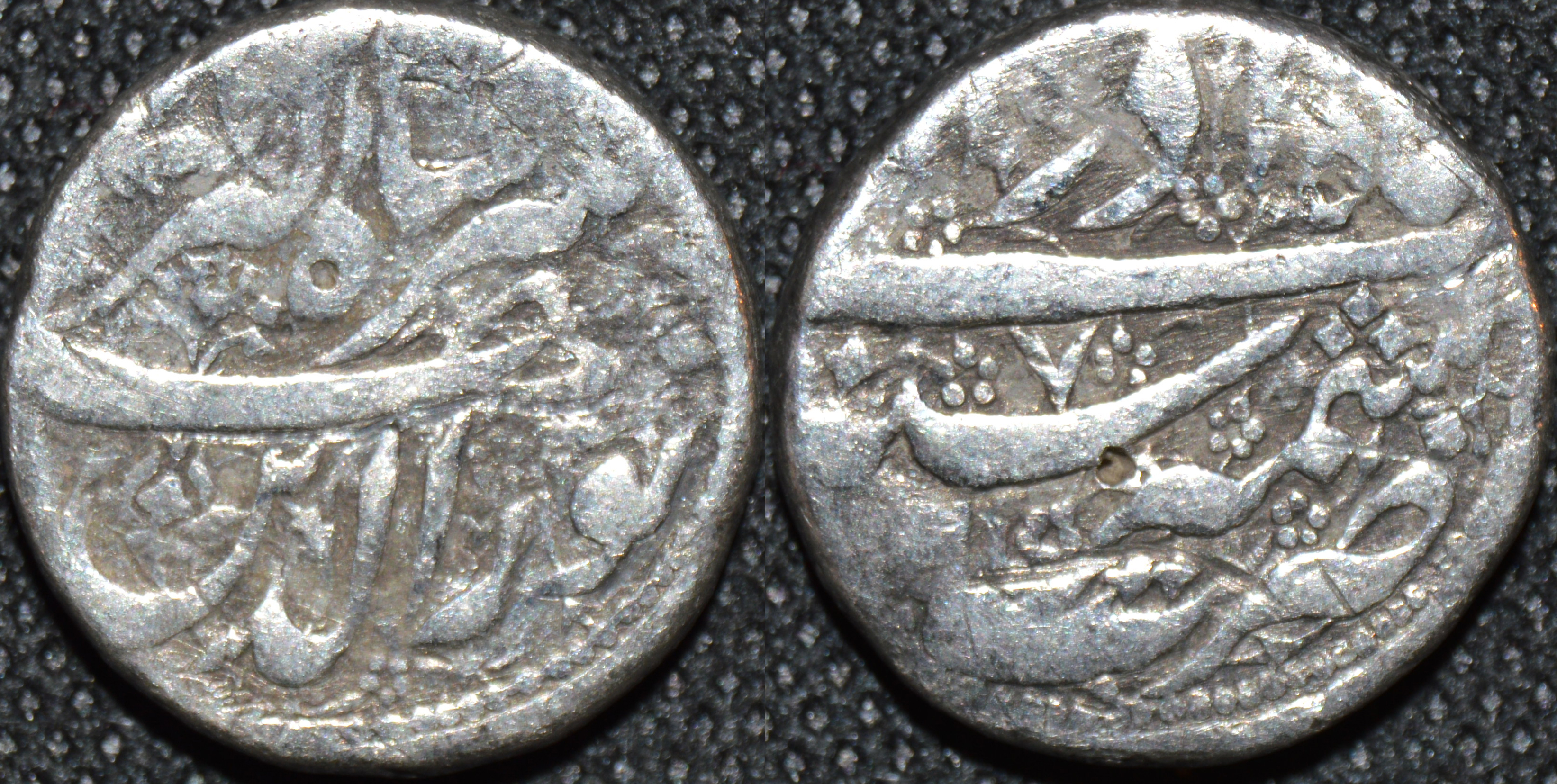
|
Jahangir (Muhammad Nur-ud-din Salim), 1605-27, Silver rupee
Weight: 11.24 gm. Diameter: 20.5 mm Die axis: 5 o'clock
Legend nur-ud-din jahangir shah akbar/
Legend, with mintname Kashmir, regnal year 7 and month Azar
|

|
Jahangir (Muhammad Nur-ud-din Salim), 1605-27, Silver jahangiri
Weight: 13.61 gm. Diameter: 21 mm Die axis: 5 o'clock
Legend /
Legend, with AH date 1020 (=1611-12 CE) and mint Kashmir
|
 |
At one point, Jahangir experimented with a new denomination, in which the silver weight was 20% higher than in the
rupee; this new coin was called the Jahangiri. This coin, minted in Kashmir, is an example ... note the weight of the coin. Later, a 25% overweight coin, the sawai (sawa
means one and a quarter), was also tried (see next coin). Neither of these experiments was popular with the traders and so the coinage returned to the normal rupee standard.
|

|
Jahangir (Muhammad Nur-ud-din Salim), 1605-27, Silver sawai, Lahore
Weight: 14.07 gm. Diameter: 25 mm Die axis: 8 o'clock
Legend, with AH date (10)17 /
Legend, with RY 4
|
 |
The couplet on this coin reads ba-dahr bad rawan ta falak buwad dar daur ba-naam-i-shah jahangir sikka-i - lahore
(by the name of Shah Jahangir, the coin / stamp of Lahore will remain current in the epoch, up to heavens in the universe). (Thanks to Shailen Bhandare and Sanjay Garg
for reading the legend.)
|
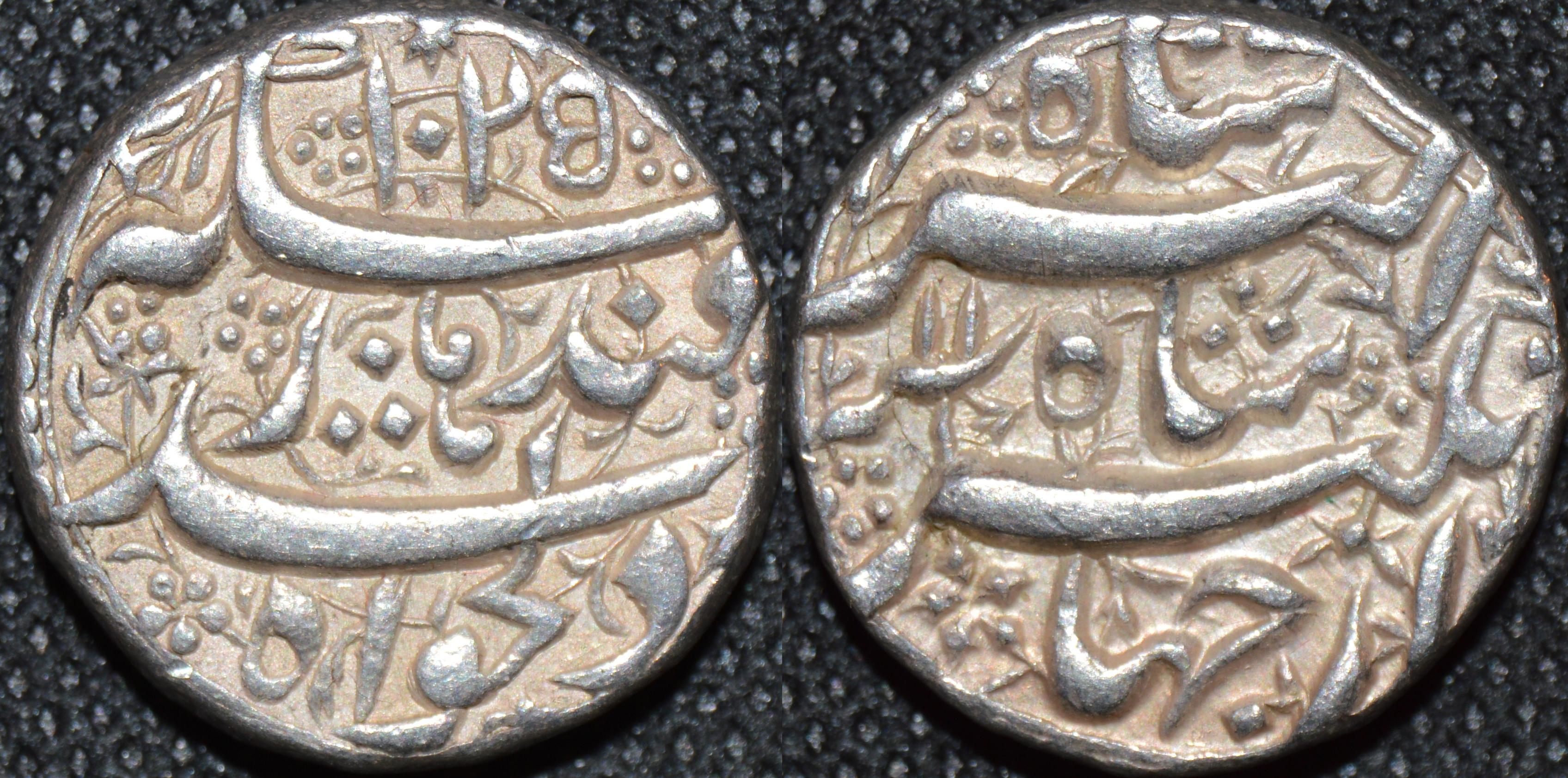
|
Jahangir (Muhammad Nur-ud-din Salim), 1605-27, Silver rupee, Qandahar
Weight: 11.41 gm. Diameter: 21 mm Die axis: 6 o'clock
Legend, including AH date 1025 = 1615-16 /
Legend, including mintname Qandahar and RY date 11
|
 |
A beauriful example of the beautiful "thick" Jahangiri style, with the words of the legends resting on a "carpet" of flowers and
a high relief. |
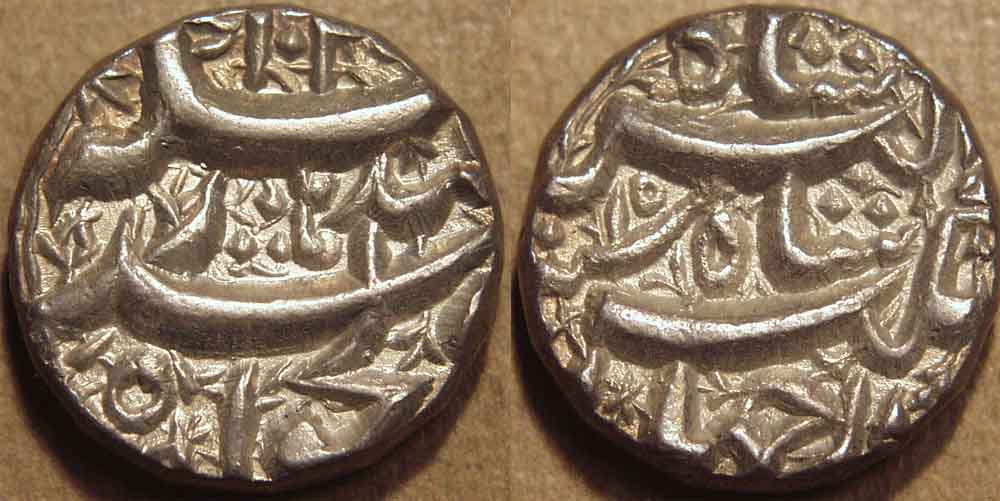
|
Jahangir (Muhammad Nur-ud-din Salim), 1605-27, Silver rupee, Qandahar
Weight: 11.39 gm. Diameter: 20 mm Die axis: 4 o'clock
Legend, including AH date 102(9) = 1619-20 /
Legend, including mintname Qandahar and RY date 15
|
 |
A later example of the same type of slightly poorer style but of tremendously high relief. The main letters are raised more than 1 mm
over the flan (the overall thickness of the coin is 4 mm). |
 |
 |
 |
Jahangir with Nur Jahan |

|
Nur Jahan, in the name of Jahangir, 1627, Silver rupee, Patna
Weight: 11.41 gm. Diameter: 20 mm Die axis: 2 o'clock
Legend, including AH date 1037 and inverted heart-shaped ornament or privy mark /
Legend, including regnal year 22 (of Jahangir)
|
 |
In the waning years of his reign, Jahangir lost himself in drink, and allowed his queen Nur Jahan to effectively run the
administration of the empire. This coin is tangible proof of Nur Jahan's power, as she places her own name on the coin, although nominally the issuer is Jahangir. The legend
reads:"By authority of Shah Jahangir, gold gained a hundred beauties by the name of Nur Jahan Badshah Begum." Upon his accession, Shah Jahan made it a capital crime to
use these coins and ordered them all melted, accounting for their rarity now. |
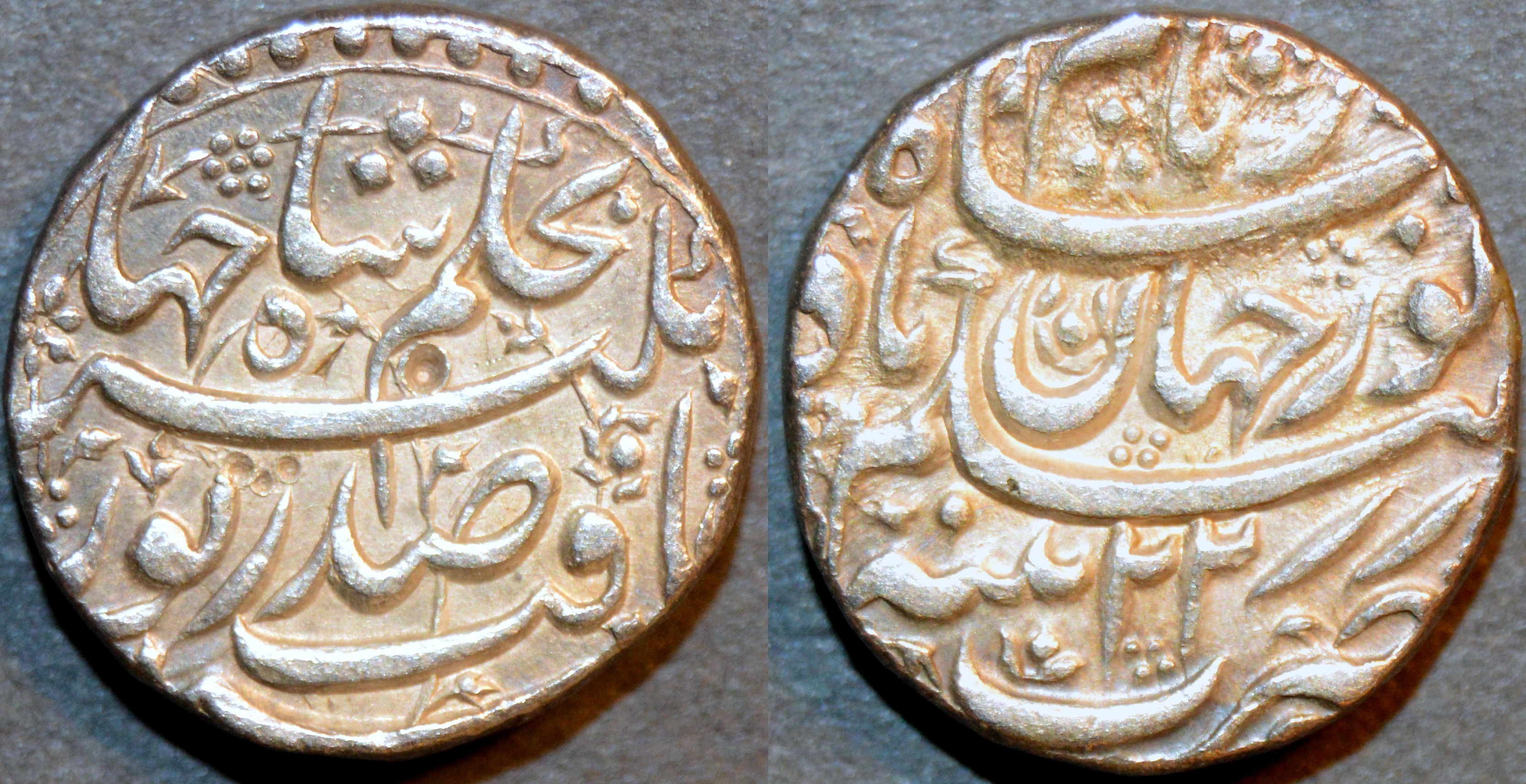
|
Nur Jahan, in the name of Jahangir, 1627, Silver rupee, Patna
Weight: 11.39 gm. Diameter: 20 mm Die axis: 11 o'clock
Legend, including AH date 1037 /
Legend, including regnal year 22 (of Jahangir)
|
 |
A particularly beautiful specimen of the same type ... note the beautiful floral scroll in the
ground of the obverse. On this coin, the privy mark seen on the previous example has disappeared, replaced by the letter he of the word
shah that has migrated down from above. |
|
|